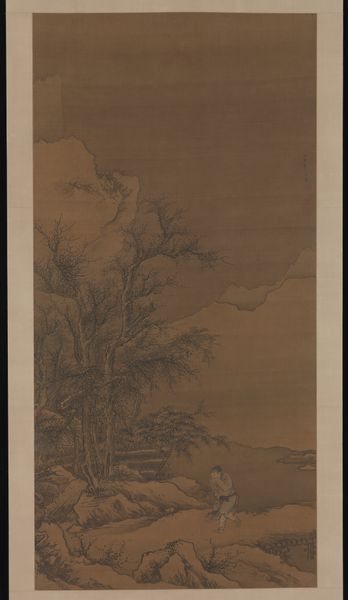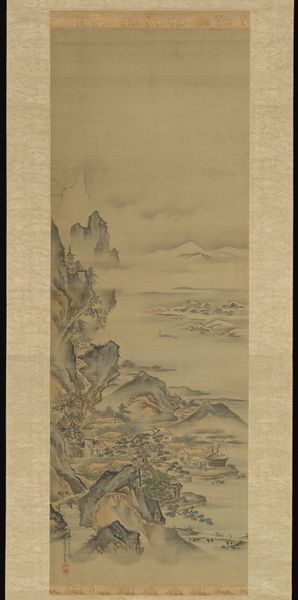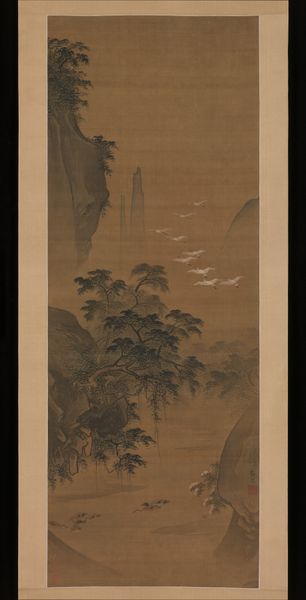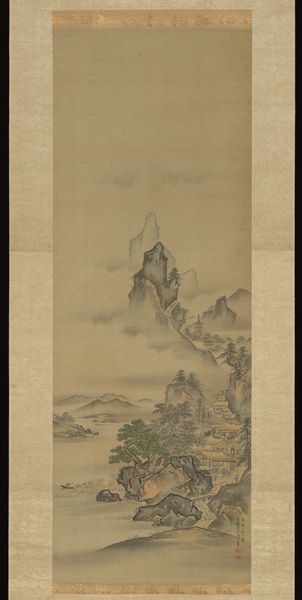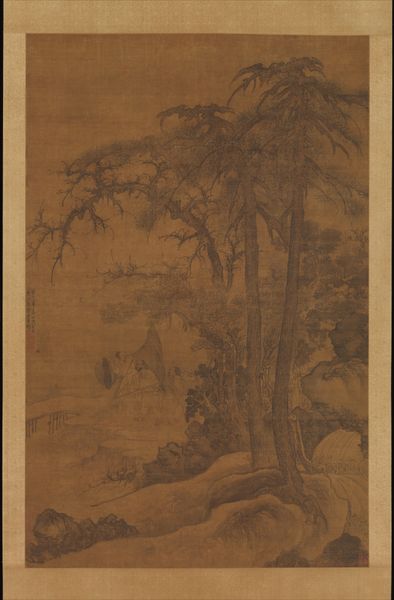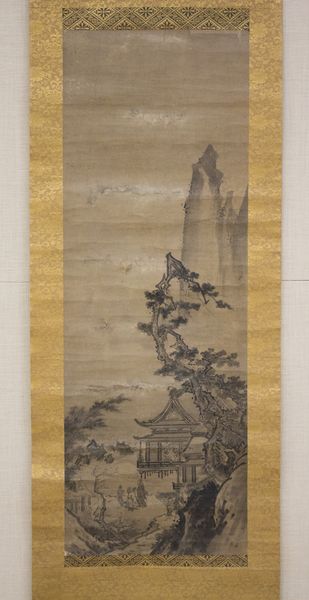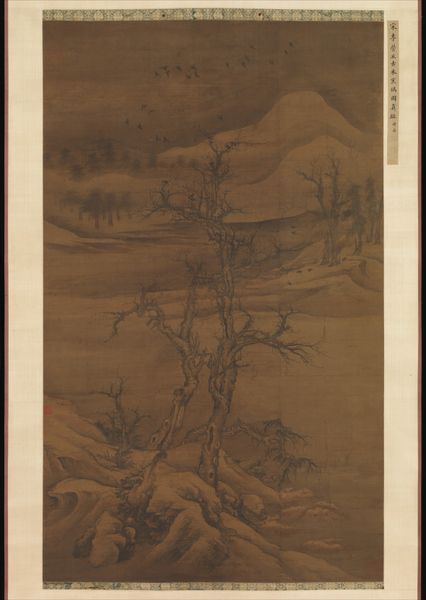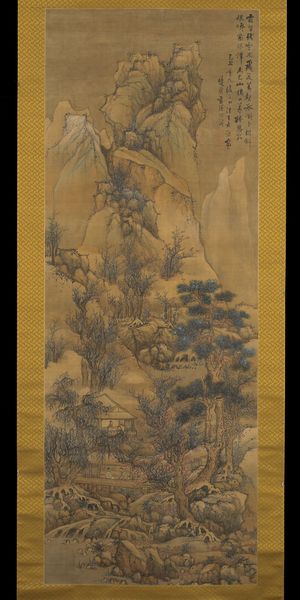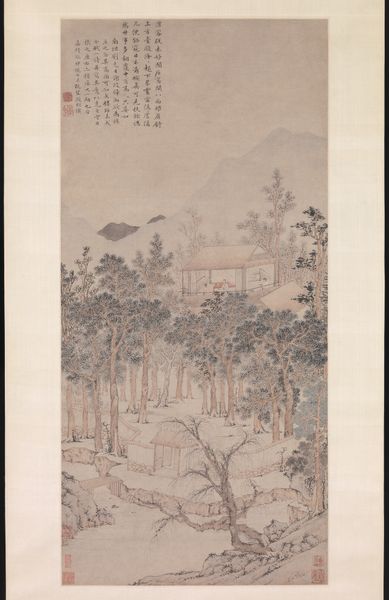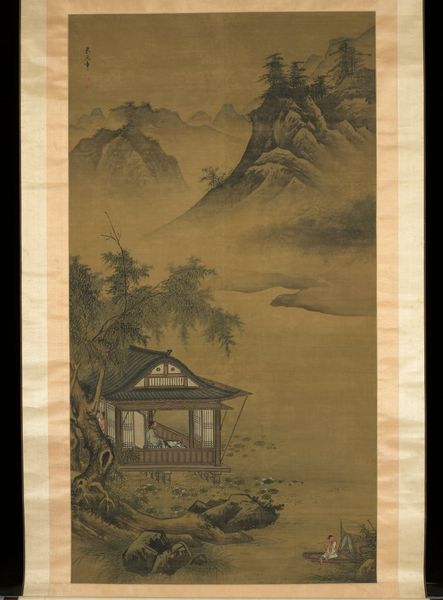
painting, paper, hanging-scroll, ink
#
narrative-art
#
painting
#
asian-art
#
landscape
#
paper
#
hanging-scroll
#
ink
#
orientalism
#
watercolor
Dimensions: 55 x 34 1/2 in. (139.7 x 87.63 cm) (image)
Copyright: Public Domain
Jiang Song created "Scholar in Landscape" using ink and color on silk during the Ming Dynasty. The literati, or scholar-officials, like Jiang Song, held a unique position in Ming society. They were tasked with upholding Confucian values through their work in the government and arts. Here, in the muted landscape, two figures meet near a humble pavilion. This encounter may represent a moment of conversation between the artist and his patron, underscoring the significance of social connections in the elite circles of the time. Scholar-artists often sought to capture the emotional and intellectual resonance of nature. These landscape paintings were not just about replicating the natural world, but about expressing personal cultivation and moral character. The work invites us to contemplate the relationship between the individual and the world, the personal and the political, and the artist and the patron.
Comments
minneapolisinstituteofart almost 2 years ago
⋮
Chiang Sung was a professional artist working in Nanking at the end of the fifteenth and beginning of the sixteenth centuries. A late proponent of the Che School, he was an important follower of Wu Wei, who popularized swift, sketchy, cursive brushwork in large scale paintings. Chiang enjoyed using sooty, deep black ink called "burnt" or "roasted." He applied his inkwash with great nuance and subtlety, creating strong compositions of varied ink tonalities and brush movements. Unfortunately, few of his rapidly executed large vertical landscapes have survived. Nanking, the capital city during early Ming, remained the commercial and administrative center of the South even after the court moved to Peking in 1421. Unlike the scholarly and poetic painting of Suchou, Nanking painting was more narrative with a preference for human figures and dramatic effect. The Che school suffered the lasting criticism of the literatus Tung Ch'i-chang (1555-1636) who condemned the emotional appeal and exaggerated brushwork of artists like Chiang Sung and Wu Wei. The Che school, however, was both popular and influential and even influenced Japanese painting styles.
Join the conversation
Join millions of artists and users on Artera today and experience the ultimate creative platform.
